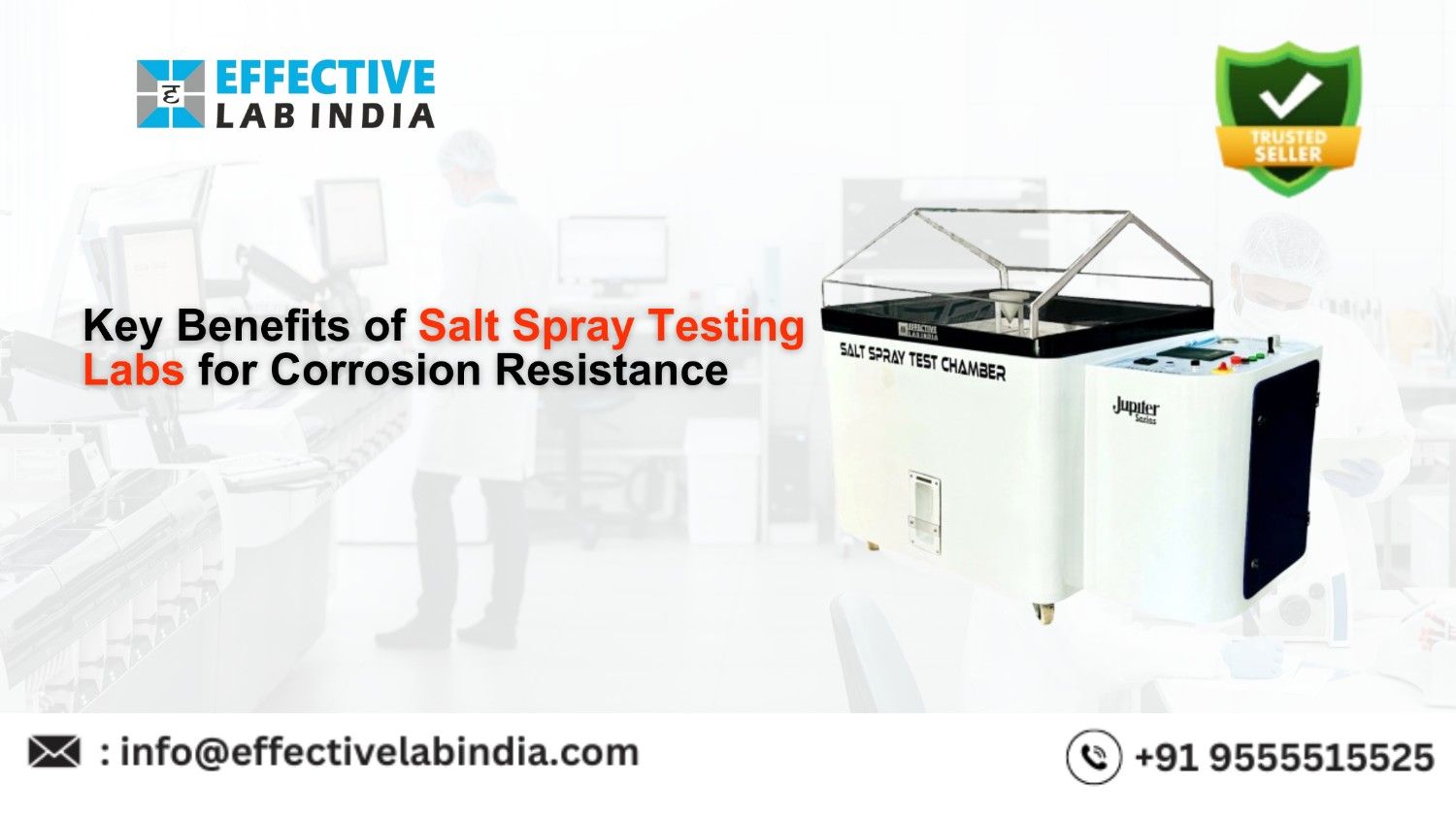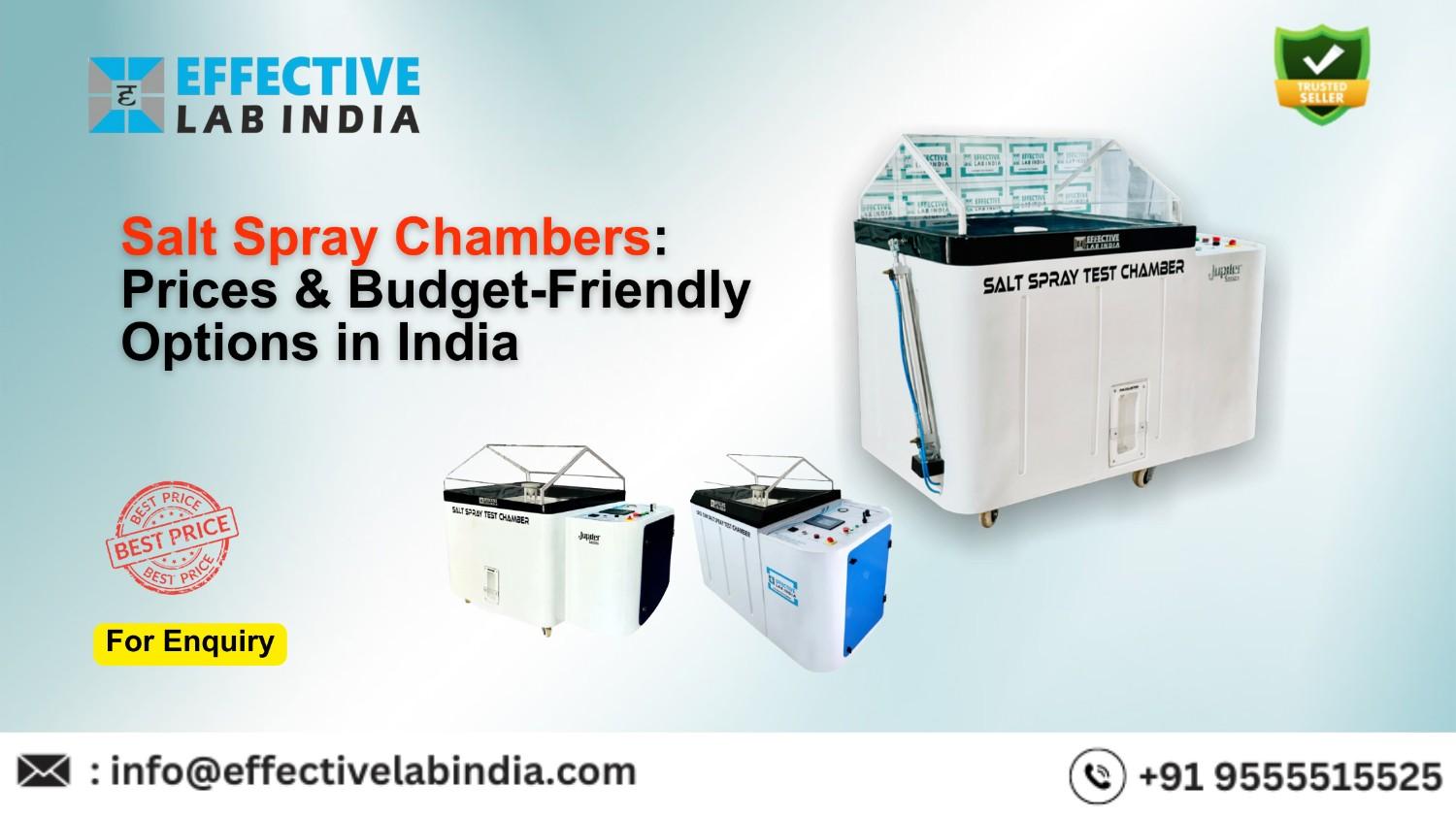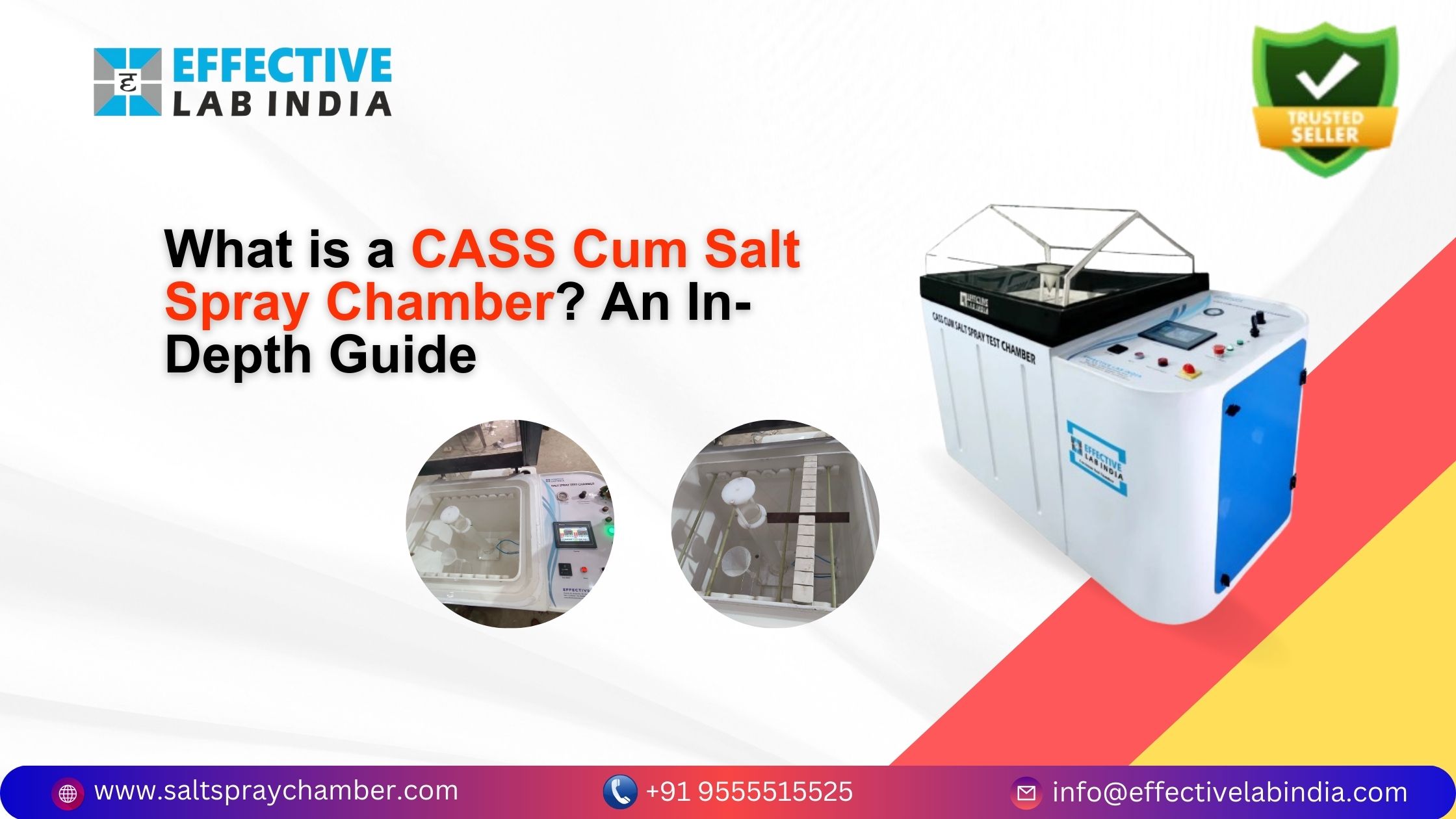Top Notch Features of Salt Spray Test Chamber

A top-notch lab testing device from Effective Lab India helps producers across several industries evaluate a material’s resistance to corrosion in real-world conditions. The name of the device is the salt spray test chamber or salt spray chamber.
Manufacturers from various industries employ various materials to build everyday instruments, electrical gadgets, and other equipment. That is imperative these materials undergo testing prior, to being used in the device’s production to ensure that the finished product meets the highest possible standards of quality.
Materials used in construction are widely used, including metals and plastics. Manufacturers evaluate the quality of these materials using a variety of testing techniques to maintain the quality. Evaluating the rustproofing of the material being used in the building is one such factor that determines quality.
What is a Salt Spray Test Machine?
A significant device in corrosion testing is the Salt Spray Test Machine helps assess a material’s resistance to corrosive conditions. These devices are indispensable in industries where material lifespan and durability are critical, such as automotive, aerospace, and construction. The varieties of salt spray chambers, how they function by ASTM B117 and ASTM G85 standards, and Effective Lab state-of-the-art products in this area are all covered in detail in this article.
The four main components of the salt spray corrosion test chamber’s design are as follows:
1. The electrical chamber
2. Tank reservoir
3. Tank for air pressure
4. Interior space
Salt Spray Inner Chamber
The salt spray test is carried out inside the instrument’s inner chamber. The manufacturer can test both large and small specimens simultaneously thanks to the inner chamber’s various sample placement possibilities. Because the inner chamber is securely fastened and prevents any air from escaping from the inside to the outside, it is incredibly insulated.
Tank Reservoir
The lab testing apparatus has a reservoir tank that holds a demineralized water solution and sodium chloride/salt, or NaCl. The reservoir tank is attached to an inlet pipe, which makes it possible for the reservoir tank to easily deliver the solution to the inner chamber, aiding in the humidification of the air from the air pressure tank.
Air Pressure Tank
Using the inflow pipe, the air pressure tank of the salt spray corrosion test chamber creates humidified air, which is then supplied to the inner chamber. Using an atomizer and an igus, the air pressure within the inner chamber may be supplied thanks to the air purge linked to the inlet pipe. The atomizer and igus, which are crucial pieces of equipment located at the bottom of the inner chamber, spray the solution from the reservoir tank mixed with the humified air from the air pressure tank into the inner chamber, creating an atmosphere that is resistant to corrosion around the specimen.
A fog dispenser on top of the igus helps to preserve the homogeneity of the salt spray test by allowing the concentrated fog to flow evenly throughout the inner chamber.
Electrical Chamber
The motherboard of the salt spray test chamber is located in the electrical chamber. The lab testing instrument’s manual adjustments and operation are handled by the electrical chamber. This chamber makes the control panel work, which makes it easier for the operator to do the salt spray test by encouraging one-handed operations.
Features of Salt Spray Test Chamber
High-end and cutting-edge features are packed into the instrument to increase the user’s competitive advantage.
Following are some of the Salt Spray Test Chamber’s features.
•One of the best aspects of the apparatus is the way the salt spray test chamber is built. The instrument’s inner chamber is built with a three-layer insulation made of mild steel, glass wool, and a specially made FRP material. There is no chance at all that the concentrated fog from the inner chamber will leak thanks to these three materials.
Additionally, the instrument has carefully designed air purge equipment that, before opening the canopy, reduces the amount of salt spray inside the inner chamber due to its high compressive ability to prevent corrosion or rusting of nearby electronics.
•Various sizes of the device are available to suit the operator’s requirements. Testing of even large specimens is made possible by the direct proportionality between the sizes of the reservoir tank and inner chamber. The following are the available sizes for the instrument:
1. A 250-litre inner chamber
2. A 450-litre inner chamber
3. A 1000-litre inner chamber
Safety Features of Salt Spray Chamber
To protect the operator and strengthen security protocols during test execution, the instrument is additionally equipped with several safety features.
There are astounding alarm systems available in the salt spray corrosion test chamber, covering all four of the separated components of the lab testing instruments:
1. Temperature overshoot alarm in the inner chamber
2. Overshoot warning for air saturator temperature
3. Low alert for solution level
4. The low air pressure alert
5. Low water level alert
6. An alert for overvoltage or undervoltage




